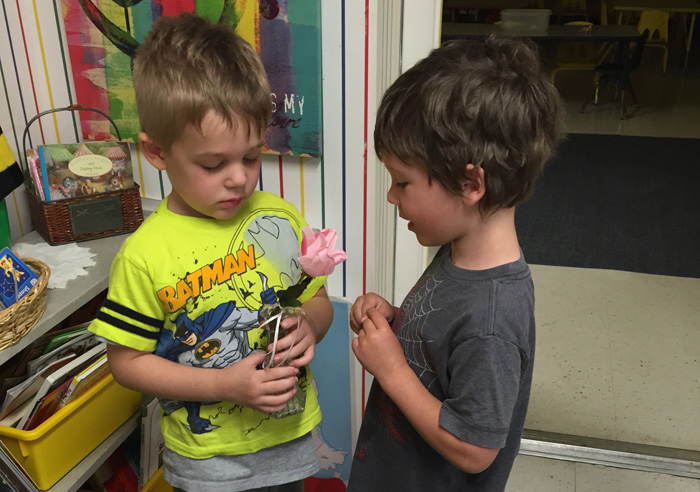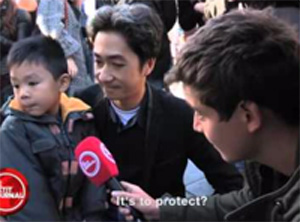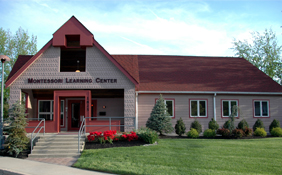In the wake of the Paris shootings, or any tragedy, how do we speak to our preschoolers about violence, if at all? Do we teach them to react to violence with more violence? Do we remain silent on the issue? Do we teach them a non-violent means of reaction to conflict? What is the appropriate response? A recent Youtube posting presents the view of one parent in response to his young son’s fears about the “bad guys” in the recent Paris shootings. As this video shows, the father responds to the child’s fears with comfort and an appropriate level of honesty. The child says, “They have guns, they can shoot us because they’re really really mean daddy.” The father says, “They might have guns, but we have flowers.” This video, and specifically the father’s response to his son’s fears, has generated some controversy, but it is clear that the father is giving his young child a lesson in peace.
Dr. Maria Montessori is one of history’s great leaders in peace education. She believed that peace among nations, families and individuals begins with children: “If we want peace in the world, we must begin with the children.” She believed that moral and spiritual instruction, perhaps as much as language, math or science, is a means—perhaps the only genuine means—of eliminating war and fostering peace. In Education and Peace, Dr. Montessori wrote: “Peace is a goal that can only be attained through common accord, and the means to achieve this unity for peace are twofold: first, an immediate effort to resolve conflicts without recourse to violence—in other words, to prevent war—and second, a long-term effort to establish a lasting peace among men” (Montessori, 1949, p. 27).
In our Montessori classrooms, we actively teach that conflicts must be resolved without resort to violence. Our teachers speak calmly and gently to the students. A common refrain is “Use your words, not your hands.” In Miss Migna’s classroom, children in a conflict use a “peace rose” to discuss their conflict: the rose is handed back and forth as the children express their feelings and reach an amicable settlement on their own. The discussion ends with the children shaking hands, hugging or calmly walking to the “Peace Center” to place the rose together back in its vase. Our Montessori classrooms and teachers promote the peaceful resolution of disputes and their methods show the children that conflict can be resolved through non-violent means.

We believe that peaceful children become peaceful adults. With education and practice, it is our hope that peaceful children will create a peaceful world.



